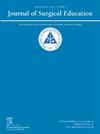Preference Signals and Away Rotations Greatly Influence Application Success in the Integrated Plastic Surgery Match
IF 2.6
3区 医学
Q1 EDUCATION, SCIENTIFIC DISCIPLINES
引用次数: 0
Abstract
Objective
Integrated plastic surgery implemented a preference signaling program (PSP) starting the 2022 to 2023 application cycle which allowed applicants to signal their top 5 preferred programs through the Plastic Surgery Central Application (PSCA). In this study, we aim to evaluate the effect on this new PSP at both the applicant and program level.
Design
This cross-sectional study relies on self-reported survey data from 2019 to 2024 from the Texas Seeking Transparency in Application to Residency (STAR) database. Variables associated were analyzed using 2-sided t-tests, Chi-squared tests, variance ratio testing and receiver operating characteristic (ROC) analysis.
Results
Plastic surgery applicants from 2023 to 2024 submitted more applications (85.1 vs 67.3, p < 0.001) and received fewer interview offers (12.5 vs 15.7, p = 0.003) than 2017 to 2022 applicants. 2023 to 2024 interview offers were more evenly distributed (SD: 8.25 vs 10.5, p = 0.001). Applications employing a signal were more likely to receive an interview (OR: 5.72, p < 0.001) and subsequently match (OR: 5.19, p < 0.001). Applications where students had done away rotations were significantly more likely to result in an interview offer (OR: 30.2, p < 0.001) and a match (OR: 27.4, p < 0.001). There was no significant difference in application number, Step 2 CK scores or honored clerkships between matched and unmatched 2023 to 2024 applicants.
Conclusions
The implementation of preference signaling in the integrated plastic surgery residency application process appears to have corresponded to an increase in average applications per student, decreased interview offers and more evenly distributed interviews among applicants. Away rotations, preference signals and geographic connections seem to most strongly predict whether an application results in a successful match.
在综合整形手术匹配中,偏好信号和远离旋转对应用成功有很大影响
目的综合整形外科从2022年到2023年的申请周期开始实施一项偏好信号计划(PSP),允许申请人通过整形外科中央申请(PSCA)发出他们最喜欢的5个项目的信号。在这项研究中,我们旨在从申请人和项目两个层面评估这项新的 PSP 的效果。设计这项横断面研究依赖于德克萨斯州寻求住院医师申请透明度(STAR)数据库中 2019 年至 2024 年的自我报告调查数据。结果与2017年至2022年的申请人相比,2023年至2024年的整形外科申请人提交了更多的申请(85.1 vs 67.3,p <0.001),收到的面试通知较少(12.5 vs 15.7,p = 0.003)。2023 年至 2024 年的面试机会分布更为均匀(SD:8.25 vs 10.5,p = 0.001)。使用信号的申请更有可能获得面试(OR:5.72,p = 0.001),并随后获得匹配(OR:5.19,p = 0.001)。学生进行过外出轮岗的申请更有可能获得面试通知(OR:30.2,p <;0.001)和匹配通知(OR:27.4,p <;0.001)。结论在综合整形外科住院医师申请过程中实施偏好信号似乎增加了每个学生的平均申请人数,减少了面试机会,并使申请人之间的面试分布更加均匀。轮转、偏好信号和地域联系似乎最能预测申请是否能成功匹配。
本文章由计算机程序翻译,如有差异,请以英文原文为准。
求助全文
约1分钟内获得全文
求助全文
来源期刊

Journal of Surgical Education
EDUCATION, SCIENTIFIC DISCIPLINES-SURGERY
CiteScore
5.60
自引率
10.30%
发文量
261
审稿时长
48 days
期刊介绍:
The Journal of Surgical Education (JSE) is dedicated to advancing the field of surgical education through original research. The journal publishes research articles in all surgical disciplines on topics relative to the education of surgical students, residents, and fellows, as well as practicing surgeons. Our readers look to JSE for timely, innovative research findings from the international surgical education community. As the official journal of the Association of Program Directors in Surgery (APDS), JSE publishes the proceedings of the annual APDS meeting held during Surgery Education Week.
 求助内容:
求助内容: 应助结果提醒方式:
应助结果提醒方式:


